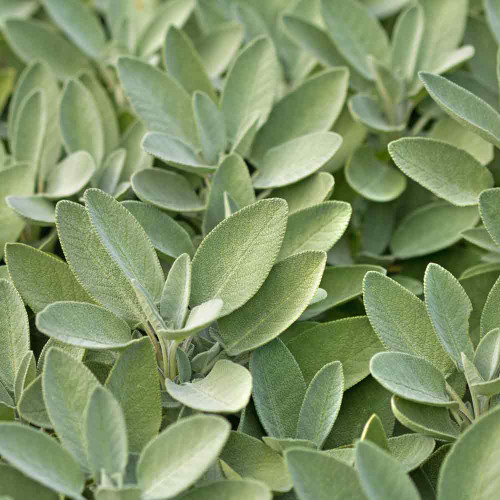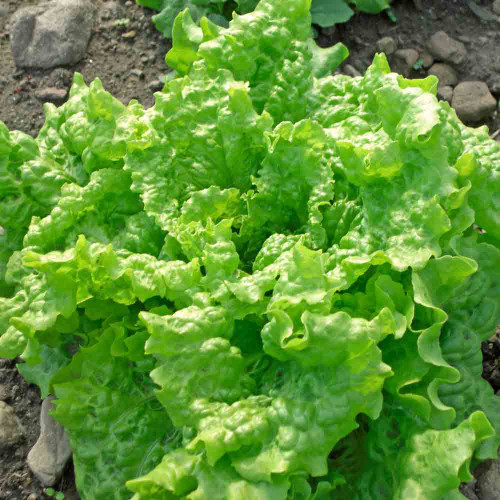Description
Scarlet Sage - Hummingbird and Butterfly Magnet
Legendarily hypnotic to hummingbirds, the tall spikes of these vivid-red tubular flowers are also a prime nectar source for bees and butterflies. From spring to fall’s first frost, a continuous supply of blossoms entices multitudes of winged visitors to feast on nectar.
Scarlet Sage - Salvia coccinea - is an easy-growing deer-resistant wildflower that tolerates drought and salty soil yet loves heat.
The delicate, airy blooms delight the eyes. At the same time, their versatility makes them the perfect addition to almost any garden, from a carpet of pollinator-focused wildflowers or butterfly garden to a professionally landscaped garden. The abundant, seemingly endless, yet richly vibrant blooms are effortlessly stylish.
The slightest breeze causes the stems to sway gently, while the blossoms seem alive as they dance with the constant activity of hummingbirds, butterflies, bees, and beneficial insects drawn to savor the sweet nectar.
Other names it’s known by are Tropical Sage, Texas Sage, Hummingbird Sage, Blood Sage, Red Sage, and Indian Fire.
Details
Native salvias are excellent food sources for small wildlife and pollinators — bees, butterflies, and hummingbirds flock to the brilliant, fire-engine red, long, tubular flowers covering the plants. Blooming from spring to fall in a symphony of color with copious amounts of nectar, it’s no wonder many gardeners consider it the "number-one nectar plant."
That nectar supply is essential to feeding adult Monarchs, while the caterpillars need milkweed leaves to mature.
Hummingbirds are the primary pollinators of scarlet sage, as the precise shape and arrangement of the flower parts only work to spread pollen when the hummingbird’s bill enters the flower, seeking nectar. The bill pushes the pollen-rich anthers up so that they touch and deposit pollen on the feathers as the bill pulls out of the flower tube. The shape and size of the hummingbird’s facial feathers help retain the pollen for the flight to the next flower.
This striking beauty usually grows to 3’ with a 2’ spread, making it a lush presence in your garden. Its true magic is revealed in full sun, where it bursts into a symphony of color, dressed to impress with its cloak of lipstick-red blossoms draped over deep green stems and leaves.
Once established, scarlet sage is hardy and drought-tolerant, a low-maintenance, eye-catching choice that thrives in sandy to loamy soils while tolerating well-drained clay soils.
Its small, green leaves are fuzzy, heart-shaped, and serrated at the edges. In warm zones, the foliage remains green nearly year-round.
Scarlet sage will easily re-seed, ensuring its lovely, brilliant presence in your garden, meadow planting, or wildflower patch for years.
History
At one time, scarlet sage was thought to have originated in Brazil, but more recent genetic research shows its diploid chromosome count now points to Mexico as its place of origin. Today, it is widespread throughout North America, Mexico, Central America, the Caribbean, Colombia, Peru, and Brazil.
Scarlet Sage was naturalized in the American Southeast long before Europeans arrived. Therefore, it is considered an American native plant.
There is some mystery about who first collected it for botanical study. The scientific name, however, traces back to the German scholar Andreas Ernst Etlinger and his 1777 doctoral thesis “De Salvia dissertatio inauguralis,” or “Inaugural Dissertation on Salvia.” Notably, It is one of the first botanical monographs about the Salvia genus and his discussion of scarlet sage.
In Latin, coccinea means "scarlet-dyed,” referring to the brilliant color of its red flowers.
When scarlet sage was introduced to Britain in the 1820s, it immediately became a popular bedding "annual" even though it is a perennial in its native Mexico.
Uses
Beyond its tremendous value as a nectar plant for pollinators, scarlet sage also has historical herbal and medicinal uses.
Scarlet sage has long been valued for its medicinal effects, with most salvias having relaxing effects as a tea. Other uses include:
- Anti-inflammatory effects as a tea
- Antimicrobial treatment for wounds as a poultice of leaves
- Reduces hyperglycemic conditions and diabetes control as a tea
- Cough and cold remedy as a tea
- Relaxation effects as a tea
As with any medicinal plant, check with your doctor for possible interactions before using it.
Companion Planting
Scarlet sage makes an excellent companion plant with black-eyed Susan, common yarrow, purple coneflower, rosemary, broccoli, Brussels sprouts, carrots, cauliflower, grapes, kohlrabi, and tomatoes.
Sage protects cabbage and cruciferous vegetables from the white cabbage butterfly while helping them grow succulent and tasty. Likewise, it protects carrots against the carrot fly and is mutually beneficial with rosemary.
When planted with eggplant, cucumber, pumpkins, rue, squash, and winter savory, it is antagonistic.
Planting Tip
Although it is native to Mexico, scarlet sage is widely adapted to home gardens across the US and Central and South America. It grows as a wildflower in the Southeast US, while it will grow as a tender perennial in warm climates. It is happy growing as an annual in cold winter climates, reseeding itself each fall.
Regardless of where your garden is, this easy-to-grow, drought-tolerant plant is at its best in warm, sunny areas with well-drained loam or sandy soil.
The best times to plant seeds are spring or fall, depending on whether you get a freezing winter. Cold winter areas should start seed indoors four to eight weeks before your last expected frost date. Gardeners with milder winters can directly sow the seeds in early to mid-fall, giving the plants time to mature before the cooler winter temperatures slow down growth.
Growing Tip
Scarlet sage grows equally well in a container or the garden, preferring well-drained soil and sunlight, but tolerates partial shade. Its ability to attract many butterflies and hummingbirds makes it a great addition to a pollinator garden, regardless of size.
Mature plants can overwinter unprotected in the warmer climates of Zones 8-11, while those with freezing winters can either collect seed for replanting next season or let the flowers scatter their seed to sprout and fill in their area over time.
Collecting seeds is simple — gently clip completely wilted flowers and place them in a paper bag. Store in a cool place for a couple of weeks to allow the seeds to finish drying, then gently shake the bag to separate the seeds from the flowers. Sort the seed, keeping plump, shiny, hard seeds to plant next season, and store it in a cool, dry, dark location.
Container-grown plants can be brought into a sunny south-facing room for the winter. Avoid large temperature swings when bringing plants inside to avoid shock, such as moving from an unheated garage to a cool room after a few days and then again into the sunny room after another few days.
Learn More
From the soil to the seed to the food you eat - we'll help you grow your best garden!
1 Review
-
Absolutely fabulous!
I started these 2 years ago. They reseeded themselves in a pot I had them in and I saved the seeds to start in my greenhouse last winter. They germinate very well and are gorgeous in flower beds and especially aroung our flagpole. The bees and hummingbirds love them.















